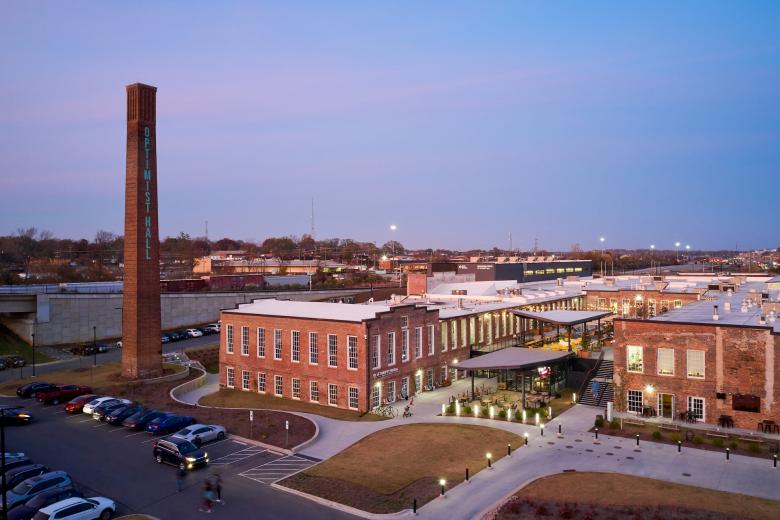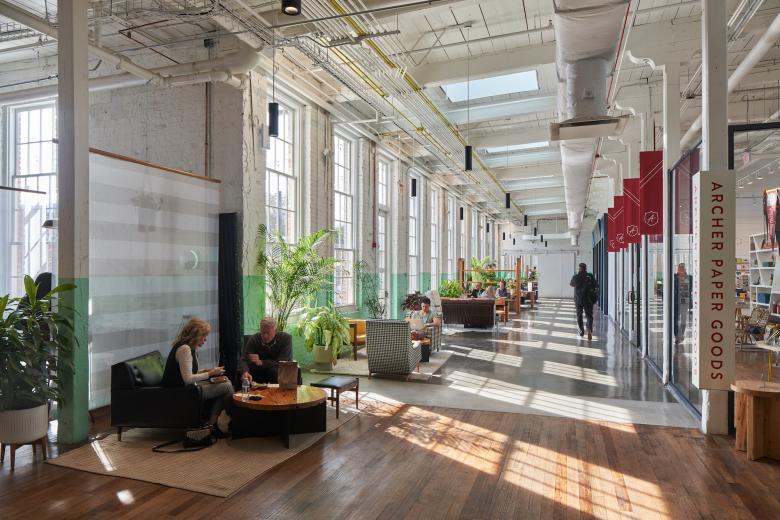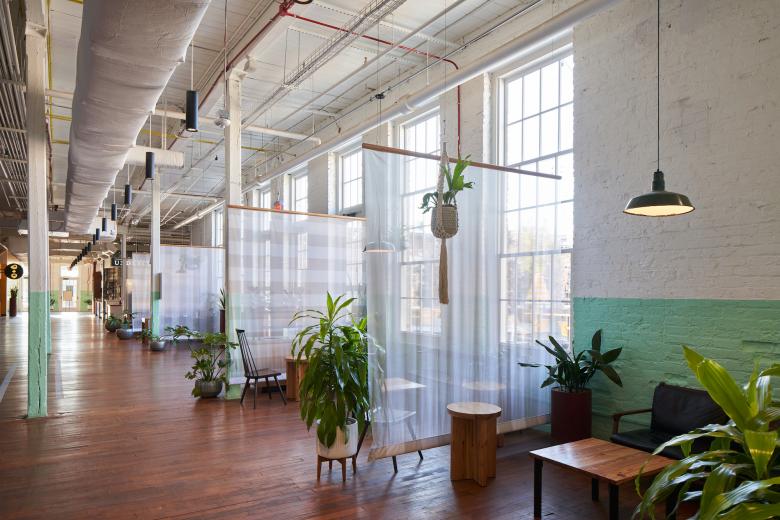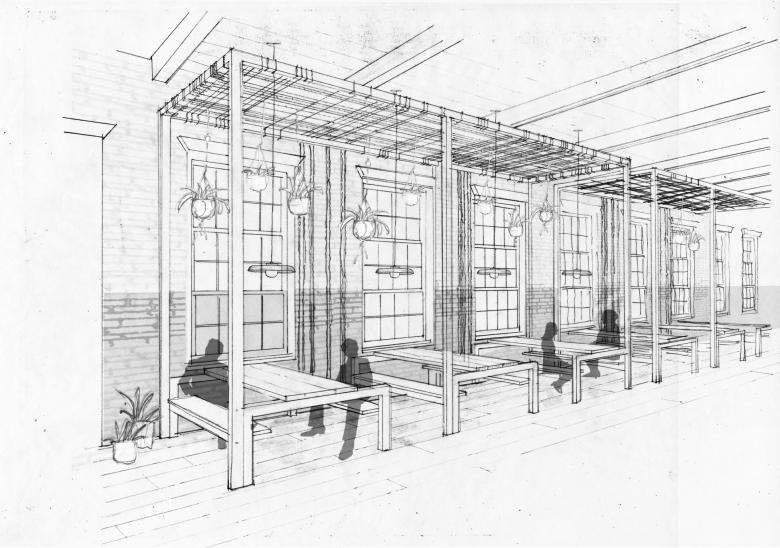US Building of the Week
Optimist Hall
Square Feet Studio, Perkins&Will
1. novembre 2021
Photo: Keith Isaacs Photography
Optimist Hall is a former textile mill and pantyhose factory that was recently transformed into a food hall with indoor and outdoor seating. Many parts of the existing building outside of its structure, walls, and floors were salvaged and incorporated into the project. Square Feet Studio, which master planned the food hall, laid out and designed the interiors, and designed the courtyard, sent us some text and images on the adaptive reuse project.
Location: Charlotte, North Carolina, USA
Client: White Point Partners and Paces Properties
Architects: Square Feet Studio and Perkins&Will
Building Area: 60,000 sf
Photo: Keith Isaacs Photography
Optimist Hall is a 60,000 square foot adaptive reuse project located in Charlotte, NC along the city’s Lynx light rail system. The project occupies a historic textile mill dating to 1881 and designed by then-famed New South industrialist and designer D.A. Tomkins. Perkins + Will was the architect for the core and shell and we designed the food hall and outdoor dining spaces.
Photo: Keith Isaacs Photography
Drawing inspiration from the spinning and weaving processes that once activated the building, we designed custom furniture using reclaimed heart pine and raw steel. Decorative lighting is provided by the old enamel warehouse pendants found in the basement during demolition, which we had rewired and listed for commercial use. The space is peppered with potted plants which thrive on the abundant natural light pouring in through the original windows. The food hall features fifteen stalls, a bar stall (also designed by Square Feet Studio), a brewery tasting room, three anchor restaurants, a game parlor bar, outdoor dining courtyard, and generous common seating.
Photo: Keith Isaacs Photography
The Food Hall at Optimist Hall is part of the larger 60,000 SF adaptive reuse of the historic North Highland Mill in Charlotte, NC, which specialized in textile manufacturing from the 1880s through the 1990s. Square Feet Studio was engaged to design the common areas of the food hall, including stall layout, FF&E, and design of the courtyard dining area. Our design draws heavily from the history of the building and the ghostly memories that permeate its spaces.
Photo: Keith Isaacs Photography
The primary design challenge was to scale the large open historic factory floor down to the experience of the individual patron, while also respecting the historic building and avoiding interventions into the original architecture which might leave a permanent trace. For this reason, we used furniture to create architectural experience and effect. Picnic tables made of reclaimed heart pine factory flooring are integrated with an overhead armature to create smaller dining spaces within the larger building.
Photo: Keith Isaacs Photography
Repurposed old factory windows found in the basement along with light translucent woven scrims are used to create partition screens around intimate 8’ x 8’ “micro lounges,” utilizing the building’s original structural module designed to fit common weaving and spinning equipment of the time. Decorative lighting in the food hall is entirely composed of reclaimed factory pendants, also found in the basement, which are rewired and otherwise largely left in their found and aged condition.
Photo: Keith Isaacs Photography
The courtyard features an array of decidedly southern Magnolia trees planted in herringbone-patterned wood planter boxes. Hand-crafted cypress furniture lines the exterior edges of the old mill building while lightweight and playfully colored metal furniture is scattered within a central graveled area, making sweet subtle reference to an image of 20th century post-war yard parties conjured by the gingham fabric traditionally produced in the factory.
Photo: Keith Isaacs Photography
Drawing: Square Feet Studio
Drawing: Square Feet Studio
Visualization: Square Feet Studio
Visualization: Square Feet Studio
Drawing: Square Feet Studio
Visualization: Square Feet Studio
Articles liés
-
Optimist Hall
on 01/11/2021
-
The State of the Art in (Chicago) Architecture
on 27/04/2015













